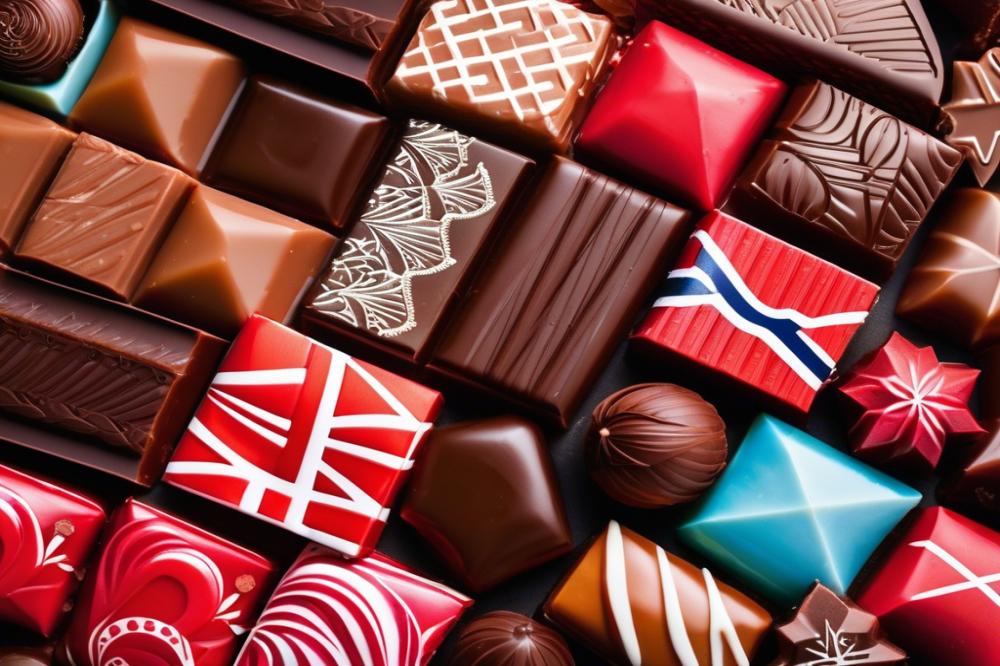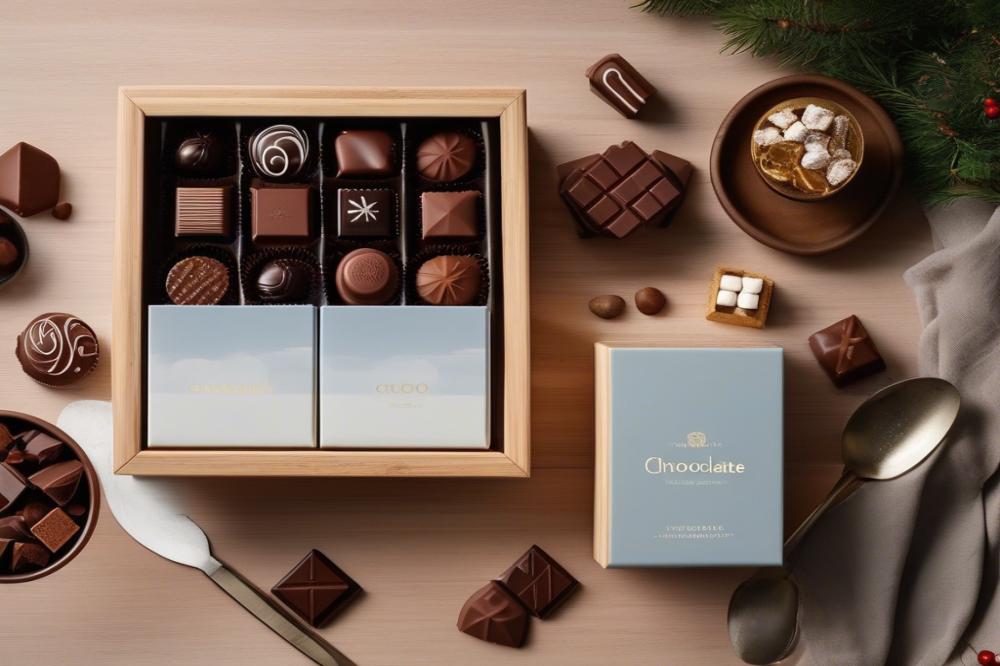From bean to bar: The chocolate making process in American factories
The journey from bean to bar is fascinating. It reveals the intricate steps involved in chocolate production that many people may not understand. This process begins with cacao sourcing. Farmers cultivate cacao beans in tropical regions around the world. Once harvested, these beans undergo several essential transformations before arriving as delicious chocolate bars on our shelves.
The bean to bar concept emphasizes quality and craftsmanship. American factories, in particular, have embraced this philosophy. They aim to create artisanal chocolate that reflects the unique flavors of the beans used. By carefully selecting cacao types and paying close attention to the chocolate manufacturing process, these producers guarantee a higher standard of quality. Each stage of production, from roasting cacao to conching and tempering chocolate, plays a significant role in the final product.
Quality control is vital in every step of the chocolate making process. Manufacturers strive to maintain consistency while also allowing room for creativity. Chocolate tasting is an important aspect, as it helps chocolatiers refine their products. Gathering feedback from tasters allows for improvements and helps in perfecting flavors. The focus on craftsmanship not only contributes to taste but also elevates the entire chocolate experience for consumers.
As we delve deeper into this world, it becomes clear that the bean to bar movement is about more than just chocolate. It represents a commitment to ethical sourcing, the celebration of flavors, and the pride of artisans who pour their heart into every batch. Understanding the process gives us a greater appreciation for the sweets we enjoy.
The Journey of Cacao Beans

In the world of chocolate production, the journey of cacao beans begins at the source. Deforested lands often threaten the habitats of the cacao trees, yet some regions still produce high-quality beans. Countries like Ecuador, Ghana, and the Dominican Republic stand out for their exceptional cacao. These locations benefit from ideal climates and fertile soil. Farmers in these regions cultivate varieties that provide rich flavors in the chocolate-making process.
Cacao Sourcing and Its Impact on Chocolate Quality
When discussing cacao sourcing, quality directly affects the final product. Bean to bar chocolate relies on selecting beans carefully. Flavors vary greatly depending on the region and processing methods. Manufacturers pay keen attention to these factors during chocolate manufacturing. They often choose beans with distinct flavor profiles. This ensures that each bar tells a unique story of its origin.
Regions Known for High-Quality Cacao
Many growers produce cacao in Central and South America. The Criollo variety, famous for its delicate taste, is cultivated here. Meanwhile, in West Africa, the Forastero beans dominate. These beans are hardier and yield a higher production rate. Each region’s specific traits contribute to varying quality levels. For consumers, this means they can taste the differences in the chocolate created from beans sourced from different areas.
Ethical Considerations in Cacao Sourcing
Ethics play a significant role in cacao sourcing. Many companies strive to support sustainable practices. Fair trade initiatives help ensure farmers receive fair compensation for their work. This creates a positive impact on communities involved in cacao production. Additionally, environmentally friendly methods may be used to protect the forests where cacao grows. Some organizations work directly with farmers to implement better agricultural practices. Ethical sourcing not only enhances quality but also fosters a greater sense of responsibility within the industry. As consumers become more conscious, they seek out brands that value both quality and integrity.
The Chocolate Making Process

Once the cacao beans are harvested, the journey begins towards creating that delightful chocolate bar we all love. Each stage of chocolate production is vital in transforming the raw bean into sumptuous sweets. Let’s take a closer look at some essential steps involved in chocolate manufacturing.
Roasting Cacao: Flavors and Aromas Developed
Roasting cacao is an art form that significantly influences the final product. High temperatures coax out flavor profiles and enrich the aroma of the beans. Different roasting times and temperatures can result in a variety of tastes. Darker roasts tend to produce bolder flavors, while lighter roasting can yield more subtle notes. Every shift in temperature adjusts how the chocolate will taste, allowing makers to create artisanal chocolate with distinctive characteristics.
Cracking and Winnowing: Separating Nibs from Shells
After roasting, the beans are cracked open. This crucial step is called cracking. The goal is to separate the valuable cacao nibs from the shells, which hold little flavor and contribute bitterness. Following this, winnowing takes place. In this process, air is used to remove the shells from the broken beans, leaving behind the pure cacao nibs. It is here that the heart of the chocolate emerges, ready for the next steps in its journey.
Key Processes in Chocolate Production
Conching: Refining Texture and Flavor
Conching is a crucial step in the chocolate-making journey. This process involves continuously mixing and aerating chocolate to improve its texture and taste. During conching, the chocolate is refined for several hours, often in a machine called a conche. Manufacturers aim to reduce grittiness and develop a smoother consistency. This method enhances the chocolate’s overall flavor profile, allowing the subtle notes of the cacao to shine through. Artisanal chocolate makers often take pride in the duration of conching, believing that longer times lead to richer flavors. Ultimately, a well-conched chocolate is a delight during chocolate tasting events.
Tempering Chocolate: Ensuring a Glossy Finish and Snap
Next comes tempering chocolate, which is vital for achieving the perfect finish. This process stabilizes the cocoa butter crystals in the chocolate. When done correctly, the end product boasts a shiny surface and gives that satisfying snap when broken. Makers often use a marble slab or a tempering machine. Heating and cooling the chocolate to specific temperatures is essential at this stage. Proper tempering enhances the quality and allure of the chocolate, making it more appealing visually. Customers appreciate the craftsmanship involved in this step during factory processes. It’s an essential part of premium chocolate manufacturing.
Molding and Cooling Chocolate for Final Product
Once tempered, the chocolate is ready to be molded. Chocolate is poured into molds designed for various shapes. These molds can range from simple bars to intricate designs, reflecting the creativity of the chocolatier. After pouring, the molds are cooled to allow the chocolate to set properly. Cooling ensures that the chocolate retains its shape when removed from the mold. Some factories use refrigeration, while others prefer room temperature. The final product is then demolded and prepared for packaging. This last step is where the beauty of bean to bar chocolate really impresses consumers. Cacao sourcing impacts the flavors and characteristics observed in each finished piece, creating a unique product that tells a story.
Artisanal vs. Mass Production
Chocolate lovers often hear about two types of chocolate makers. On one side are the artisanal chocolate producers. These small-scale makers focus on the bean to bar philosophy. Craftsmanship is key to their process. They pay special attention to cacao sourcing. The goal is to find the best beans from various regions, often emphasizing quality over quantity.
In contrast, large factories dominate the mass production market. Their processes are focused on efficiency. Huge machines streamline every step of chocolate manufacturing. Roasting cacao, conching, and tempering chocolate can happen simultaneously. This speed allows these operations to produce vast amounts of chocolate quickly. However, each piece may sacrifice flavor and character for uniformity.
The uniqueness of artisanal chocolate comes from special techniques. Many small producers experiment with flavors. They may incorporate local ingredients or alternative sweeteners. Taste tests become an essential part of their creative process. Such attention to detail creates chocolates that offer a richer experience. Chocolate tasting at an artisanal shop can be a delightful journey through flavors.
Small-scale chocolate makers face significant challenges today. Sourcing high-quality cacao can be difficult. Market fluctuations affect prices of raw materials. Staying competitive with mass-produced brands is another hurdle. Often, they rely on loyal customers who appreciate their dedication and craftsmanship. Building that customer base takes time and effort.
Artisanal makers cherish the personal touch. They are often family-owned businesses. Each chocolate bar tells its own story. While large factories churn out consistent products, the heart of small producers shines through their work. Passion for chocolate production keeps them going despite the obstacles.
Chocolate Tasting and Product Variety
Understanding Flavor Profiles Through Chocolate Tasting
Tasting chocolate is not just a treat; it’s an experience. Different techniques in chocolate production lead to a wide array of flavor profiles. For instance, flavor can vary based on the origins of the cacao. Roasting cacao beans affects their taste significantly. Some prefer deep, rich flavors while others enjoy fruitier notes. Participants in tastings often describe their experiences in terms of aroma, texture, and the aftertaste. Each chocolate can have its own story based on its ingredients and how it was crafted. Understanding these details enhances one’s appreciation for artisanal chocolate.
Varied Products from Bars to Bonbons and Their Market Appeal
The chocolate market is filled with diverse options. You can find everything from classic chocolate bars to exquisite bonbons. In addition to bars, many companies create specialty products that highlight unique flavors. Market appeal rests on creative packaging and innovative flavors. Seasonal offerings often attract customers seeking something special. Furthermore, gourmet chocolates have risen in popularity, appealing to those willing to pay a premium for quality. Customers enjoy exploring the wide range of tasty delights available.
Trends in American Chocolate Consumption
American chocolate consumption is evolving rapidly. Consumers are seeking high-quality, ethically sourced options more than ever. Many are now interested in bean to bar products. Transparency in cacao sourcing has become a vital aspect of buying decisions. People appreciate knowing where their chocolate comes from. Moreover, health trends influence choices; dark chocolate is often favored for its potential benefits. Social media also plays a role in spreading awareness about artisanal chocolate varieties. New brands continuously emerge, tapping into these trends to attract devoted fans.
Wrapping Up the Journey
The journey from bean to bar is a fascinating process that highlights the craft of chocolate production in American factories. Starting from the careful selection of cacao beans, each step demands attention to detail and a passion for quality. The roasting, grinding, and conching stages transform raw ingredients into the rich flavors that chocolate lovers cherish. By the time the chocolate is molded and wrapped, a remarkable process has taken place, revealing stories of the land and the people behind the product.
Looking ahead, the future of American chocolate appears bright. More artisans are embracing the bean to bar movement, emphasizing sustainable practices and local sourcing. This trend not only supports farmers but also breeds innovation in flavor and technique. Consumer interest in high-quality, ethically produced chocolate is on the rise. As this sector matures, we can anticipate exciting new varieties and craft chocolates that are both delicious and responsibly made.
It’s worth exploring the rich flavors available in American chocolate today. Many brands offer experiences that challenge your taste buds and showcase the artistry of their makers. So, take a moment to savor the different notes—fruity, floral, or nutty—that can surprise even the most seasoned chocolate connoisseurs. Engaging with this unique world can deepen your appreciation for a beloved treat. Embrace the opportunity to discover and enjoy what American chocolatiers have to offer.



